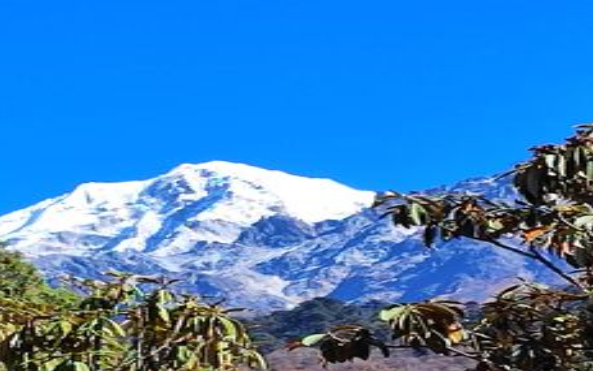Nepal, nestled in the lap of the mighty Himalayas, offers travelers an unparalleled mix of natural beauty, cultural richness, and adventure opportunities. From the towering heights of Mount Everest to the medieval squares of Kathmandu Valley, a Nepal tourism package unlocks experiences that appeal to travelers of all interests and abilities.
The Gateway to the Himalayas
Nepal’s geographical diversity is remarkable for a country of its size. Within just 147,181 square kilometers, the landscape rises from near sea level in the subtropical Terai region to the world’s highest peak at 8,848 meters. This dramatic topography creates diverse ecological zones that support rich biodiversity and offer varied experiences for visitors.
Tourism packages typically cover the three main geographical regions:
- The Himalayan region in the north, home to eight of the world’s fourteen peaks over 8,000 meters
- The hilly region in the middle, with its terraced farms, traditional villages, and moderate climate
- The Terai region in the south, featuring subtropical forests, wildlife reserves, and fertile plains
Cultural Richness and Heritage
Nepal’s cultural landscape is as varied as its natural environment. The country is home to over 125 ethnic groups, each with their own traditions, languages, and festivals. Tourism packages often include cultural immersion experiences that allow visitors to:
- Explore UNESCO World Heritage Sites in Kathmandu Valley, including ancient temples, palaces, and stupas
- Visit traditional villages where centuries-old customs remain alive
- Participate in or observe vibrant festivals that occur throughout the year
- Experience authentic Nepali cuisine, with its distinct regional variations
The Kathmandu Valley, with its three historic cities—Kathmandu, Bhaktapur, and Patan—serves as the cultural heart of Nepal. Durbar Squares in each city showcase exquisite Newari architecture, while structures like Swayambhunath Stupa (Monkey Temple) and Boudhanath Stupa represent significant Buddhist monuments.
Adventure Tourism Opportunities
For adventure enthusiasts, Nepal is nothing short of paradise. Tourism packages frequently include activities such as:
- Trekking along well-established routes like the Annapurna Circuit, Everest Base Camp, or Langtang Valley
- White-water rafting on pristine rivers like the Trishuli, Seti, or Bhote Koshi
- Mountain biking through challenging terrains and scenic landscapes
- Paragliding in Pokhara with views of the Annapurna range
- Jungle safaris in Chitwan or Bardia National Parks
The trekking routes vary in difficulty and duration, making them accessible to both beginners and experienced hikers. Many packages offer porters and guides who enhance the experience with their local knowledge and support.
Spiritual Journeys
As the birthplace of Buddha in Lumbini and home to countless temples and monasteries, Nepal attracts many seeking spiritual enrichment. Tourism packages might include:
- Meditation retreats in serene settings
- Visits to sacred sites like Lumbini, Pashupatinath, or Muktinath
- Interactions with spiritual leaders and opportunities to learn about Buddhist and Hindu philosophies
These experiences offer more than sightseeing—they provide insights into ancient wisdom traditions that have shaped Nepal’s cultural identity for millennia.
Wildlife and Nature Experiences
Nepal’s conservation efforts have created protected areas that safeguard rare and endangered species. Tourism packages to these regions typically feature:
- Jungle safaris to spot Bengal tigers, one-horned rhinoceros, and diverse bird species
- Guided walks through community forests
- Bird-watching excursions in diverse habitats
- Boat rides in lakes and wetlands
Chitwan National Park, a UNESCO World Heritage Site, remains the most popular wildlife destination, offering close encounters with impressive megafauna in a well-managed conservation area.
Sustainable Tourism Initiatives
Many Nepali tourism operators now emphasize sustainable practices that benefit local communities while minimizing environmental impact. These packages might include:
- Homestays in rural communities where tourism income supports local development
- Trek routes that incorporate waste management systems
- Cultural experiences led by community members
- Carbon offset programs for flights and transportation
These initiatives help ensure tourism benefits extend beyond urban centers and major attractions to support broader economic development throughout the country.
Customizing Your Nepal Tourism Package
The best tourism packages offer flexibility to accommodate individual interests, time constraints, and physical abilities. Consider factors such as:
- Season: The dry seasons (October-November and March-May) offer optimal conditions for most activities
- Duration: Quality experiences can range from week-long cultural tours to month-long trekking expeditions
- Special interests: Whether photography, cuisine, spirituality, or adventure sports
- Comfort level: Options range from basic teahouse accommodations to luxury resorts
Working with knowledgeable tour operators can help create an itinerary that maximizes experiences while respecting these constraints.
Conclusion
A well-planned Nepal tourism package delivers far more than stunning mountain views—it offers transformative experiences that connect visitors with diverse cultures, pristine natural environments, and adventure opportunities. Whether seeking spiritual growth, cultural insights, or physical challenges, travelers to Nepal find experiences that resonate long after returning home. As tourism in Nepal continues to evolve, the focus on sustainable practices ensures these experiences will remain available for generations to come.
Frequently Asked Questions
When is the best time to visit Nepal? The peak seasons are October-November and March-May, offering clear skies and moderate temperatures. December-February is cold but good for lower elevation treks, while the monsoon season (June-September) brings rain but fewer tourists.
Do I need special permits for trekking in Nepal? Yes, most trekking regions require permits. The two main ones are the TIMS (Trekkers’ Information Management System) card and specific conservation area permits for regions like Annapurna, Everest, and Langtang.
How physically fit do I need to be for trekking in Nepal? It depends on the trek. Some routes like Poon Hill are suitable for beginners with moderate fitness, while others like the Three Passes Trek demand excellent conditioning and prior trekking experience.
Is it safe to drink the water in Nepal? It’s recommended to drink bottled or purified water. Many trekking routes now have safe drinking water stations, and portable purification methods are widely used by responsible trekkers.
How much should I budget for a Nepal trip? Costs vary widely based on your travel style. Budget travelers can manage on $30-50 per day, mid-range travelers on $100-150, and luxury experiences start from $250+ daily, excluding international flights.
Do I need a visa to visit Nepal? Most nationalities can obtain visas on arrival at Tribhuvan International Airport or land entry points. Visa fees vary based on length of stay, with options for 15, 30, or 90 days.

